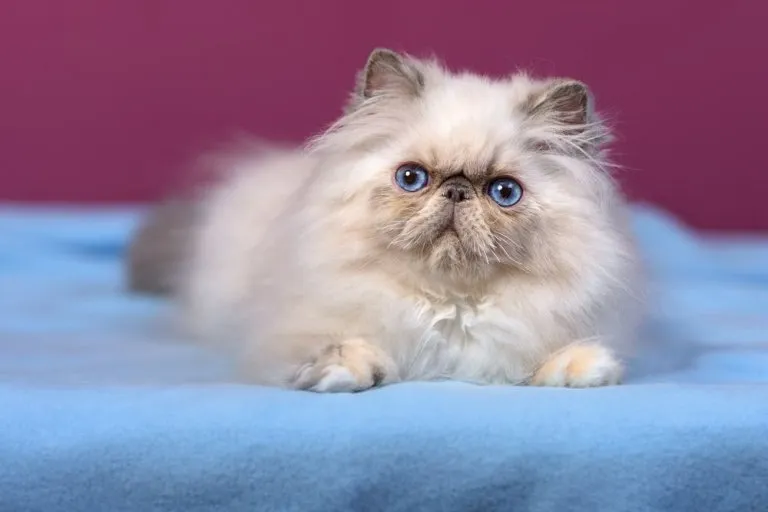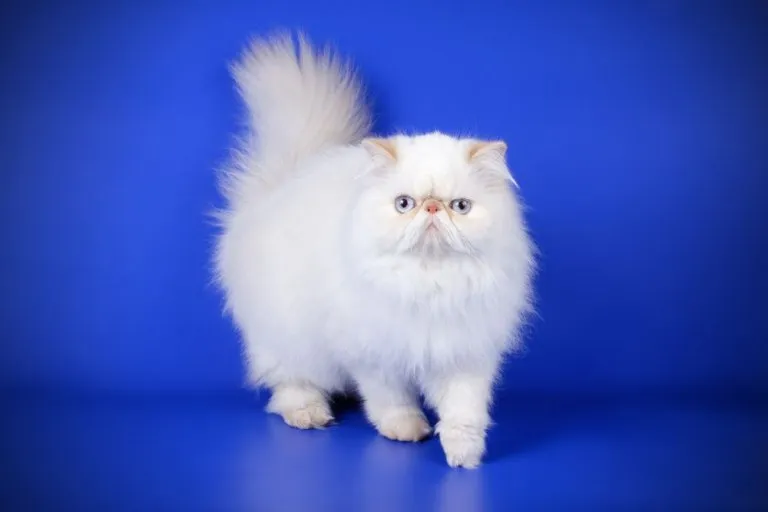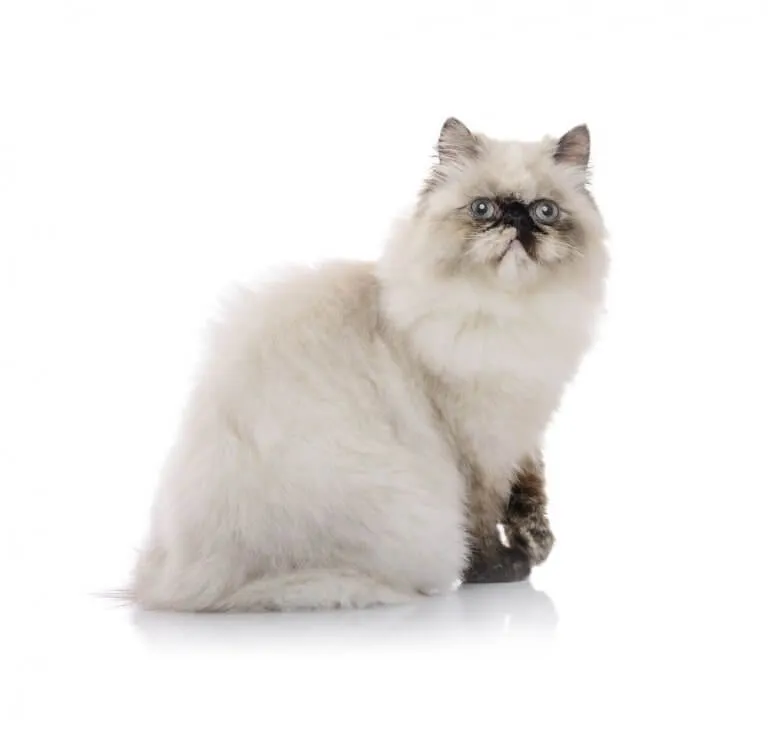The Himalayan cat, often called the Himmy or Colorpoint Persian, is a stunning breed that combines the luxurious long coat of the Persian with the striking colorpoint pattern and vivid blue eyes of the Siamese. Known for their gentle temperament and affectionate nature, Himalayan cats make ideal companions for families seeking a calm, loving pet. Whether you’re a first-time cat owner or experienced enthusiast, understanding the Himalayan cat’s traits, care needs, and history ensures a happy, healthy life for this beautiful feline.
 Himalayan cat with striking blue eyes and colorpoint coat
Himalayan cat with striking blue eyes and colorpoint coat
Personality and Temperament
Himalayan cats are renowned for their sweet, docile personalities, blending the laid-back vibe of Persians with a touch of Siamese playfulness. These cats crave human interaction and love curling up on laps for long cuddling sessions, making them perfect for relaxed households. Despite their regal appearance, Himalayans are family-friendly, highly sociable, and patient with children and other pets, scoring high on kid-friendliness and pet compatibility.
Their intelligence shines through in easy trainability and curiosity, though they’re not overly demanding of space or activity—ideal for apartment living. Playfulness comes from their Siamese ancestry, enjoying games like fetch or laser chase, but they prefer moderate exercise over high-energy antics. Vocally moderate, they meow softly rather than excessively, and their low independence means they thrive on attention but handle alone time better than clingier breeds.
 Cute blue-cream colorpoint Persian kitten showing affectionate personality
Cute blue-cream colorpoint Persian kitten showing affectionate personality
Himalayans exhibit a gentle affection level, often bonding deeply with one or two favorite people while remaining polite to guests. Their sweet disposition makes them less aloof than some pure Persians, offering a balanced temperament that’s both loving and low-maintenance emotionally.
Care Essentials for Himalayan Cats
Proper care is crucial for Himalayan cats due to their distinctive features, including their long coats and brachycephalic (flat-faced) structure. Focus on nutrition, grooming, exercise, and health monitoring to prevent common issues and promote longevity.
Nutrition
Himalayan cats require a high-quality diet with real meat or fish as the primary ingredient to maintain their silky coat and overall vitality. Look for formulas enriched with omega fatty acids, which support skin health and reduce shedding. Portion control is vital since these cats are prone to obesity—feed measured meals twice daily and avoid free-feeding. Fresh water is essential, especially for those with flat faces prone to tear staining.
Consult a veterinarian for breed-specific advice, such as wet food options to aid hydration and dental health. Responsible feeding from kittenhood establishes healthy habits, contributing to their typical 12-15 year lifespan.
 Red-point Persian cat demonstrating grooming needs
Red-point Persian cat demonstrating grooming needs
Grooming
Daily brushing is non-negotiable for Himalayan cats’ long, double coats, which form mats if neglected. This routine strengthens bonds and distributes natural oils for a glossy shine. Flat-faced individuals often need facial cleaning to prevent tear stains—use vet-approved wipes gently around eyes and folds.
Additional care includes weekly nail trims, ear cleaning to avoid infections, and toothbrushing with feline toothpaste. Occasional baths suit oily-coated Himalayans, using cat-specific shampoos. Grooming demands a 100% commitment, but most enjoy the pampering.
Exercise
Encourage daily play to combat weight gain, leveraging their playful side with interactive toys like feather wands or balls. Sessions of 15-20 minutes suffice, mimicking hunting instincts without overexertion. For brachycephalic Himalayans, opt for low-impact activities to prevent breathing issues—avoid overheating.
Incorporate climbing trees or window perches for mental stimulation. Consistency turns exercise into a fun ritual, keeping your Himalayan fit and engaged.
Health Considerations
While generally robust, Himalayan cats can inherit polycystic kidney disease (PKD), hypertrophic cardiomyopathy (HCM), and brachycephalic airway syndrome. Reputable breeders screen parents via genetic testing and ultrasounds to minimize risks. Watch for signs like labored breathing, dental malocclusions, or twitchy skin from feline hyperesthesia syndrome.
Regular vet check-ups, including dental cleanings and heart screenings, ensure early detection. Their protruding eyes may lead to cherry eye, treatable surgically if needed.
History of the Himalayan Cat Breed
The Himalayan cat emerged in the 1930s from crosses between Siamese and Persian cats by Harvard researchers Dr. Clyde Keeler and Virginia Cobb, producing the first colorpoint longhair, Newton’s Debutante. Breeder Jean Mill advanced the line in 1948, while others like Brian Sterling-Webb and Marguerita Goforth refined it, earning Cat Fanciers’ Association (CFA) recognition in 1957.
Debates persist: some registries view Himalayans as a Persian variant (Colorpoint Persian), others a distinct breed. By 1984, CFA classified it under Persians. Today, all major associations accept it interchangeably.
 Persian longhair illustrating Himalayan cat history
Persian longhair illustrating Himalayan cat history
Fun facts: The smallest recorded adult cat was a Himalayan named Tinkertoy; they’re named after Himalayan rabbits, not mountains; and rank among top popular breeds.
Himalayan Cat Breed Standard
Himalayans boast a cobby, rounded body (7-12 pounds, 12-14 inches tall) with broad chests. Heads are large, round with snub noses and forehead breaks; ears small and low-set; eyes deep blue and expressive.
Legs are sturdy, paws round with tufts, tail thick and plumed. Coats are long, thick with ruffs and frills; points (darker extremities) include seal, chocolate, blue, cream, red, tortie, tabby, or lynx on lighter bodies.
 Himalayan cat showcasing breed standard features
Himalayan cat showcasing breed standard features
Where to Find a Himalayan Cat
Adopt from shelters via Petfinder—many resemble Himalayans. For breeders, seek those testing for PKD and HCM; expect $200-$3,000. Prioritize health over rarity.
Frequently Asked Questions
How much does a Himalayan cat cost?
Prices range from $200 to $3,000, depending on pedigree and breeder.
How big do Himalayan cats get?
Adults weigh 7-12 pounds and stand 12-14 inches tall.
How long do Himalayan cats live?
Typically 12-15 years with proper care.
Do Himalayan cats shed?
Yes, moderately due to long hair, but daily grooming manages it effectively.
In summary, the Himalayan cat offers unmatched beauty, affection, and companionship for dedicated owners willing to invest in grooming and health vigilance. Consult veterinarians for personalized advice and explore adoption to give a Himmy a forever home. Discover more cat breed guides for your perfect match!
